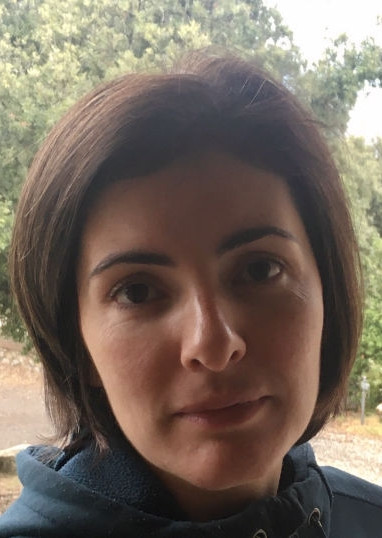Keynote Speakers

Prof. Sam KWONG Tak Wu
IEEE Fellow, US National Academy of Innovators Fellow, Hong Kong Academy of Engineering and
Sciences Fellow
Chair Professor of Computational Intelligence,
Associate Vice-President (Strategic Research) of Lingnan University,
Hong Kong, China
Speech Title: High Dynamic Range Video
Abstract:: High Dynamic Range (HDR) video is a technology that
significantly enhances the visual experience by expanding the
range of contrast and color in video content. Unlike standard
dynamic range (SDR) video, HDR allows for brighter highlights,
deeper shadows, and a wider color gamut. This results in more
realistic and vibrant images that closely mimic the way the
human eye perceives the real world. In this segment, we will
delve into the fundamental principles of HDR, exploring how it
works, the technical standards behind it (such as HDR10, Dolby
Vision, and HLG), and the benefits it brings to various types of
content, from movies and TV shows to video games and live
broadcasts In this talk, I will talk about the following:
HDR Image Reconstruction
High dynamic range (HDR) image reconstruction is a process that
aims to create images with a greater range of luminance levels
than what is achievable with standard digital imaging
techniques. This allows for the capture of both very bright and
very dark details in a scene, closely mimicking human vision. By
combining multiple images taken at different exposure levels,
HDR reconstruction techniques can produce visually stunning and
highly detailed images that better represent the range of light
present in real-world scenes.
EIN: Exposure Induced Network for Single Image HDR
Reconstruction
The Exposure Induced Network (EIN) for Single Image HDR
Reconstruction is a novel deep learning approach designed to
generate HDR images from a single standard dynamic range (SDR)
input. Unlike traditional methods that require multiple
exposures, EIN leverages a neural network to predict and
reconstruct HDR content by learning the relationships between
different exposure levels. This enables the creation of
high-quality HDR images even in situations where only a single
exposure is available, making HDR imaging more practical and
accessible for various applications.
LGFM: HDR Image Quality Assessment Based on Frequency
Disparity
The Local and Global Frequency Modulation (LGFM) method for HDR
image quality assessment is a sophisticated approach that
evaluates the quality of HDR images based on the disparity in
frequency components. By analyzing both local and global
frequency information, LGFM can more accurately reflect the
human visual system's sensitivity to different types of
artifacts and distortions in HDR content. This results in a more
reliable and comprehensive assessment of HDR image quality.
Short bio: Professor KWONG Sam Tak Wu is the Associate Vice-President (Strategic Research), J.K. Lee Chair Professor of Computational Intelligence, the Dean of the School of Graduate Studies and the Acting Dean of the School of Data Science of Lingnan University. Professor Kwong is a distinguished scholar in evolutionary computation, artificial intelligence (AI) solutions, and image/video processing, with a strong record of scientific innovations and real-world impacts. Professor Kwong was listed as the World’s Top 2% Scientists by Stanford University since 2021 and one of the most highly cited researchers by Clarivate in 2022 and 2023. He has also been actively engaged in knowledge transfer between academia and industry. He was elevated to IEEE Fellow in 2014 for his contributions to optimization techniques in cybernetics and video coding. He was a Fellow of the Asia-Pacific Artificial Intelligence Association (AAIA) in 2022, and the President of the IEEE Systems, Man, and Cybernetics Society (SMCS) in 2021-23. He is a fellow of US National Academy of Inventors (NAI) and the Hong Kong Academy Awards of Engineering and Sciences (HKAES). Professor Kwong has a prolific publication record with over 350 journal articles, and 160 conference papers with an h-index of 90 based on Google Scholar. He is currently the associate editor of a number of leading IEEE transaction journals.

Prof. Benedetta Tondi
University of Siena, Italy
Speech Title: Watermarking of Generative AI: From Copyright Protection to the Authentication of
Media Contents
Abstract:: As generative AI continues to evolve, concerns around transparency, authenticity, and
intellectual property are becoming more pressing. Tools like GPT-4, DALL·E, and Midjourney, powered by
large-scale foundation models, are now widely used to generate realistic images, text, and other media.
However, their ability to produce synthetic content indistinguishable from human-generated material
raises critical issues—from copyright infringement to the spread of misinformation and deepfakes.
In response to these challenges, model watermarking has emerged as a promising approach to protect the
intellectual property of generative AI models and to promote trustworthy AI. By modifying the AI models
in such a way that imperceptible signals are embedded into AI-generated outputs, watermarking enables
downstream identification, authentication, and traceability of synthetic media.
After a general introduction on the topic of Deep Neural Network (DNN) watermarking, the talk delves
into technical strategies for embedding robust watermarks into GANs and Diffusion Models—two of the most
powerful families of generative models—in such a way that each model output contains an embedded
watermark that can be reliably recovered during the identification phase. These watermarks enable
copyright protection and provide a means to trace generated content back to the source model that
produced it, supporting model attribution and content authentication. Methods embedding watermarks
post-training are also discussed. The keynote aims to offer both a conceptual and practical
understanding of watermarking as a cornerstone for building trust in generative AI, while also outlining
open challenges and limitations.
Short bio: Benedetta Tondi received the MSc degree in electronics and communications engineering, and the PhD degree in information engineering and mathematical sciences, from the University of Siena, Italy, in 2012 and 2016, respectively. She is currently an Associate Professor at the Department of Information Engineering and Mathematics, University of Siena. She is a member of the Information Forensics and Security Technical Committee of the IEEE Signal Processing Society. Her research interests focus on adversarial signal processing, multimedia forensics, AI security, and watermarking of deep neural networks. She currently serves as an Associate Editor for the IEEE Transactions on Information Forensics and Security and the IEEE Signal Processing Letters. She has been Technical Program Chair of ACM IH&MMSEC 2022 and Area Chair of several IEEE conferences and workshops. She has received Best Paper Awards at WIFS and MMEDIA. She is the recipient of the 2017 GTTI PhD Award for the best PhD thesis defended at an Italian University in the areas of Communications Technologies (Signal Processing, Digital Communications, Networking).

Prof. Zengxi Huang
(
Professor of Computer Science, Expert in Audio-Visual Forensic Examination)
Xihua University, China
Short bio: Zengxi Huang earned his Ph.D. in Computer Science and Technology from Sichuan University, China, in 2014. He is currently a Professor at the School of Computer and Software Engineering, Xihua University, where he served as Associate Dean of the Software Engineering Department from 2018 to 2022. Since 2016, he has also been the Technical Director of the Audio-Visual Forensic Examination Group at the Sichuan Xihua Jiaotong Forensic Center. From 2017 to 2018, he was an Academic Visitor at the Centre for Vision, Speech and Signal Processing (CVSSP), University of Surrey, U.K., collaborating with the distinguished Professor Josef Kittler. He is working with Professor Cairong Zhao at Tongji University since 2024. His research primarily lies in the field of computer vision and image processing, with specific interests in pedestrian detection, person re-identification, human action recognition, and multimodal biometrics. Dr. Huang has led or participated in more than 10 research projects and has published over 20 academic papers. His work has been recognized with several awards, including the Best Paper Award for Commercial Applications at the AMDO 2018 conference and the Outstanding Forensic Examination Report award at the 3rd "Song Ci Cup" competition organized by the Ministry of Justice of China.

Assoc. Prof. Rui Chen
Tianjin University, China
Short bio: Rui Chen (Member, IEEE) received the Ph.D. degree in instrument science from Tsinghua University, China, in 2010. He is currently an Associate Professor with the School of Microelectronics, Tianjin University. He has authored or coauthored one book and more than 70 technical articles in refereed journals and proceedings. His current research interests include generative artificial intelligence technology and cognitive theory.